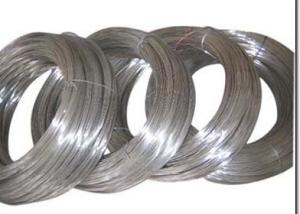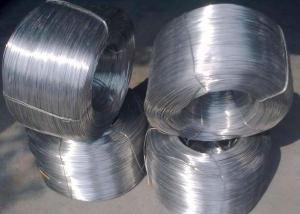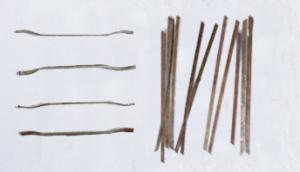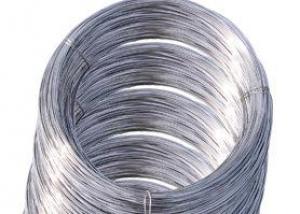wire mesh stainless steel in heavy duty
- Loading Port:
- Qingdao
- Payment Terms:
- TT OR LC
- Min Order Qty:
- 10 m.t.
- Supply Capability:
- 1000 m.t./month
OKorder Service Pledge
OKorder Financial Service
You Might Also Like
heavy duty wire mesh stainless steel
Chemical composition of stainless steel wire:
AISI Grade | Chemical Composition(%) | |||||||
| C | Si | Mn | P | S | Ni | Cr | Mo | |
| 304 | ≤0.08 | ≤1.00 | ≤2.00 | ≤0.045 | ≤0.030 | 8.00~10.50 | 18.00~20.00 | - |
| 304H | >0.08 | ≤1.00 | ≤2.00 | ≤0.045 | ≤0.030 | 8.00~10.50 | 18.00~20.00 | - |
| 304L | ≤0.030 | ≤1.00 | ≤2.00 | ≤0.045 | ≤0.030 | 9.00~13.50 | 18.00~20.00 | - |
| 316 | ≤0.045 | ≤1.00 | ≤2.00 | ≤0.045 | ≤0.030 | 10.00~14.00 | 10.00~18.00 | 2.00~3.00 |
| 316L | ≤0.030 | ≤1.00 | ≤2.00 | ≤0.045 | ≤0.030 | 12.00~15.00 | 16.00~18.00 | 2.00~3.00 |
| 430 | ≤0.12 | ≤0.75 | ≤1.00 | ≤0.040 | ≤0.030 | ≤0.60 | 16.00~18.00 | - |
| 430A | ≤0.06 | ≤0.50 | ≤0.50 | ≤0.030 | ≤0.50 | ≤0.25 | 14.00~17.00 | - |
Stainless Steel Hard Wire
Use: steel rope , steel brush, spring , stapler, etc.
Size: from 0.05mm to 5mm
Soft stianless steel wire
Use: Knitted wire mesh, weaving wire mesh, filtration mesh, high pressure pipe
Size: from 0.07mm -0.60mm
| Standard: | AISI,ASTM,DIN,EN,GB,JIS |
Deviation (mm) | Standard | |
Tolerance (mm) | Max.Deviation (mm) | |
0.32-0.45 | ±0.006 | ±0.006 |
0.50-0.75 | ±0.006 | ±0.006 |
0.80-0.95 | ±0.008 | ±0.008 |
1.00-1.25 | ±0.010 | ±0.010 |
1.30-1.50 | ±0.010 | ±0.010 |
1.60-1.80 | ±0.015 | ±0.015 |
2.0-2.5 | ±0.015 | ±0.015 |
3.0-4.0 | ±0.015 | ±0.015 |
- Q:What are the different types of stainless steel wire rope pulleys?
- There are several different types of stainless steel wire rope pulleys that are commonly used in various industries. 1. Single Sheave Pulleys: These pulleys have a single wheel or sheave that rotates on an axle. They are typically used in simple lifting and pulling applications where a single line of wire rope is required. 2. Double Sheave Pulleys: These pulleys have two wheels or sheaves that rotate on a common axle. They are designed to distribute the load evenly between two lines of wire rope, making them ideal for applications where increased lifting capacity or balance is needed. 3. Swivel Eye Pulleys: These pulleys feature a swivel eye attachment, allowing them to rotate freely in any direction. This design is particularly useful in applications where the pulley needs to change direction or follow the movement of the load. 4. Fixed Eye Pulleys: These pulleys have a fixed eye attachment, which means they cannot rotate freely. They are commonly used in situations where the direction of the load remains constant and no rotation is required. 5. Adjustable Pulleys: These pulleys have a mechanism that allows for the adjustment of the distance between the sheaves. This feature is beneficial in applications where the length of the wire rope needs to be adjusted to accommodate different loads or lifting heights. 6. Heavy-Duty Pulleys: These pulleys are designed to handle heavier loads and are constructed with larger sheaves and stronger materials. They are commonly used in industries such as construction, mining, and marine, where the demands on the pulleys are more significant. 7. Stainless Steel Swivel Pulleys: These pulleys are specifically made from stainless steel, which provides excellent corrosion resistance and durability. They are commonly used in outdoor or marine environments where exposure to moisture or saltwater can cause rust or degradation. Overall, the type of stainless steel wire rope pulley chosen will depend on the specific application requirements, load capacity, and environmental conditions in which it will be used.
- Q:What's the difference between stainless steel wire drawing and stainless steel products?
- Stainless steel wire drawing is a kind of metal processing technology. It is the most popular surface treatment technology in the stainless steel and aluminum products industry. It is the drawing effect of the stainless steel and aluminum products.
- Q:What are the common uses of stainless steel wire in the telecommunications industry?
- Due to its unique properties, stainless steel wire finds extensive use in the telecommunications industry for a wide range of applications. The following are some common uses of stainless steel wire in this industry: 1. Guy wires: To provide stability and support to telecommunication towers and antennas, stainless steel wire is frequently employed as guy wires. These wires possess exceptional strength and resistance to corrosion, making them perfect for enduring harsh weather conditions and maintaining the structural integrity of the towers. 2. Cable reinforcement: In order to enhance the strength and durability of telecommunications cables, stainless steel wire is utilized as reinforcement. Usually, these wires are wrapped around the cables to offer mechanical support and prevent stretching or breaking during installation or transportation. 3. Antenna elements: Stainless steel wire is widely chosen as antenna elements in various telecommunication systems. These wires are preferred for their excellent electrical conductivity and resistance to corrosion, thereby enabling efficient signal transmission and reception. 4. Grounding applications: For telecommunication equipment and infrastructure, stainless steel wire is employed in grounding applications. By providing a reliable electrical connection to the earth, grounding wires made of stainless steel safeguard the equipment against power surges and lightning strikes. 5. Suspension systems: To hang and support various telecommunication equipment, such as fiber optic cables, stainless steel wire is utilized in suspension systems. These wires ensure strength and stability, preventing sagging or damage to the cables over long distances. Overall, stainless steel wire plays a vital role in the telecommunications industry by offering strength, durability, and corrosion resistance. This ensures the efficient and reliable operation of telecommunication systems and infrastructure.
- Q:What are the different wire gauges available for stainless steel wire?
- The different wire gauges available for stainless steel wire typically range from 14 gauge to 30 gauge, with 14 gauge being the thickest and 30 gauge being the thinnest.
- Q:Can stainless steel wire be used for springs in the automotive industry?
- Yes, stainless steel wire can be used for springs in the automotive industry. Stainless steel is known for its high strength, durability, and corrosion resistance, making it a suitable material for automotive applications where springs are required. The use of stainless steel wire ensures that the springs can withstand the harsh conditions and demands of the automotive environment, providing reliable performance and longevity.
- Q:Can stainless steel wire be used for wire jewelry making?
- Yes, stainless steel wire can definitely be used for wire jewelry making. It is a popular choice among jewelry makers due to its durability, strength, and resistance to tarnish. Stainless steel wire is available in different gauges, making it suitable for various jewelry-making techniques such as wire wrapping, wire weaving, and creating intricate designs. It is also versatile and can be used to create a wide range of jewelry pieces, including necklaces, bracelets, earrings, and even rings. Additionally, stainless steel wire is hypoallergenic, making it a great option for individuals with sensitive skin or allergies to other metals.
- Q:Can stainless steel wire be used for electrical heating elements?
- Yes, stainless steel wire can be used for electrical heating elements. Stainless steel has good electrical conductivity and high resistance to heat, making it suitable for applications that require efficient and reliable electrical heating.
- Q:Can stainless steel wire be used for wire forms?
- Certainly, wire forms can definitely utilize stainless steel wire. Renowned for its corrosion resistance, strength, and aesthetic charm, stainless steel emerges as an adaptable and enduring substance. Such commendable traits render it ideal for fabricating wire forms necessitating robustness and endurance. Widespread employment of stainless steel wire forms is observed across diverse sectors encompassing automotive, aerospace, medical, and industrial domains. Furthermore, the malleability of stainless steel wire allows for effortless bending, twisting, and shaping into multifarious configurations, rendering it the perfect choice for crafting intricate and sophisticated wire structures.
- Q:What are the different wire surface finishes available for stainless steel wire?
- Stainless steel wire offers various options for surface finishes, each with its own unique characteristics and advantages. Some commonly used finishes include the following: 1. Bright Annealed: This finish involves heating the wire to high temperatures and then rapidly cooling it, resulting in a surface that is bright and reflective. It offers excellent resistance to corrosion and is often preferred for applications where aesthetics play a crucial role, such as jewelry and architectural projects. 2. Pickled: To achieve this finish, the wire is immersed in an acid bath, which effectively removes impurities and oxides from the surface. The result is a clean and smooth wire, ideal for applications that require high levels of cleanliness, such as medical devices and food processing equipment. 3. Electro-Polished: This finish involves subjecting the wire to an electrolytic process that removes a thin layer of material from the surface, leaving it smooth and shiny. Electro-polished wire offers enhanced corrosion resistance and is commonly used in industries like pharmaceuticals, semiconductors, and biotechnology. 4. Passivated: To achieve this finish, the wire is treated with an oxidizing agent, such as nitric acid, to eliminate contaminants and create a protective oxide layer on the surface. Passivation enhances the wire's corrosion resistance and is often favored for marine or outdoor applications. 5. Satin: This finish is achieved by mechanically polishing the wire surface using abrasive materials, resulting in a brushed or satin-like appearance. It provides a decorative finish and is commonly used in furniture, automotive trims, or kitchen appliances. 6. Coated: This finish involves applying a protective coating, such as nylon or PVC, to the wire's surface. It offers additional protection against abrasion, chemicals, or moisture and is commonly used in applications where the wire may be exposed to harsh environments or requires insulation. These examples illustrate the range of surface finishes available for stainless steel wire. The choice of finish depends on specific application requirements, including corrosion resistance, aesthetics, cleanliness, or functionality. Consulting with a wire manufacturer or supplier can help determine the most suitable finish for a particular application.
- Q:Can stainless steel wire be bent without breaking?
- Yes, stainless steel wire can be bent without breaking. Stainless steel is known for its excellent flexibility and durability, allowing it to be easily bent into various shapes or forms without snapping or breaking.
1. Manufacturer Overview |
|
|---|---|
| Location | |
| Year Established | |
| Annual Output Value | |
| Main Markets | |
| Company Certifications | |
2. Manufacturer Certificates |
|
|---|---|
| a) Certification Name | |
| Range | |
| Reference | |
| Validity Period | |
3. Manufacturer Capability |
|
|---|---|
| a)Trade Capacity | |
| Nearest Port | |
| Export Percentage | |
| No.of Employees in Trade Department | |
| Language Spoken: | |
| b)Factory Information | |
| Factory Size: | |
| No. of Production Lines | |
| Contract Manufacturing | |
| Product Price Range | |
Send your message to us
wire mesh stainless steel in heavy duty
- Loading Port:
- Qingdao
- Payment Terms:
- TT OR LC
- Min Order Qty:
- 10 m.t.
- Supply Capability:
- 1000 m.t./month
OKorder Service Pledge
OKorder Financial Service
Similar products
New products
Hot products
Hot Searches
Related keywords




























